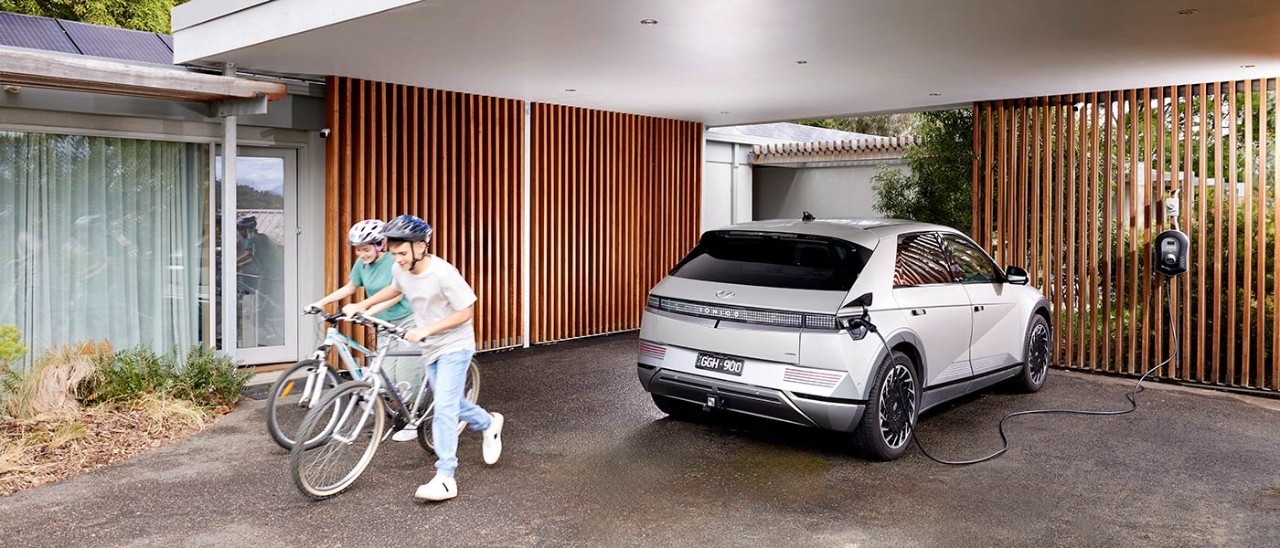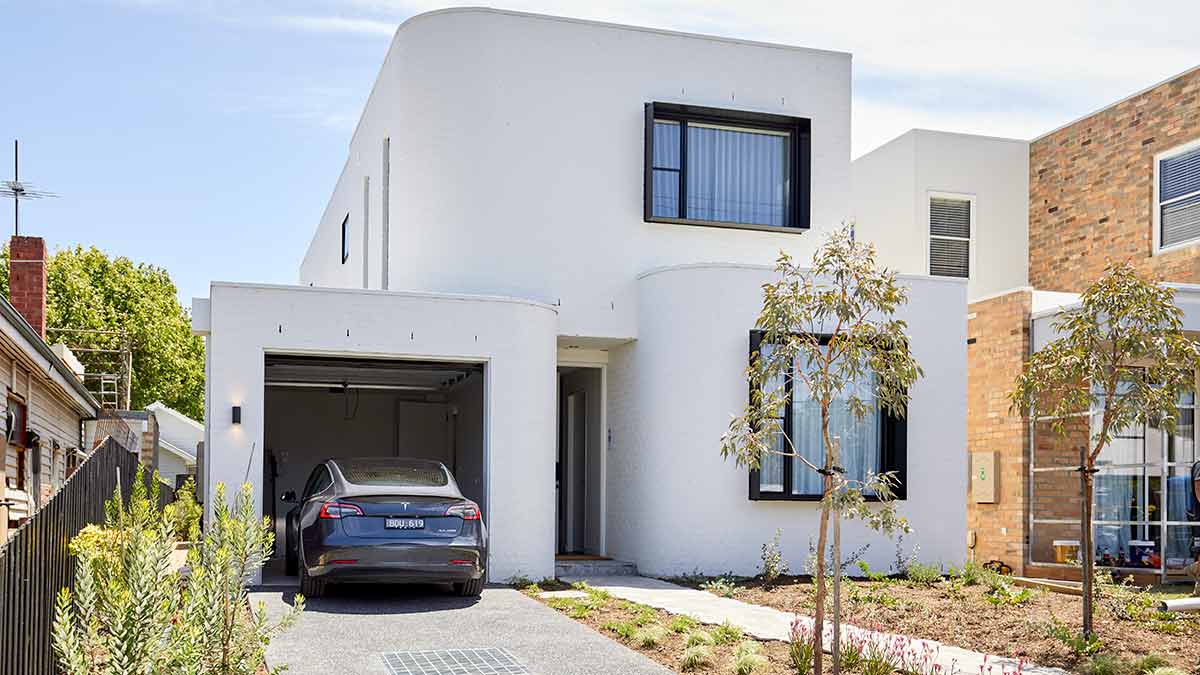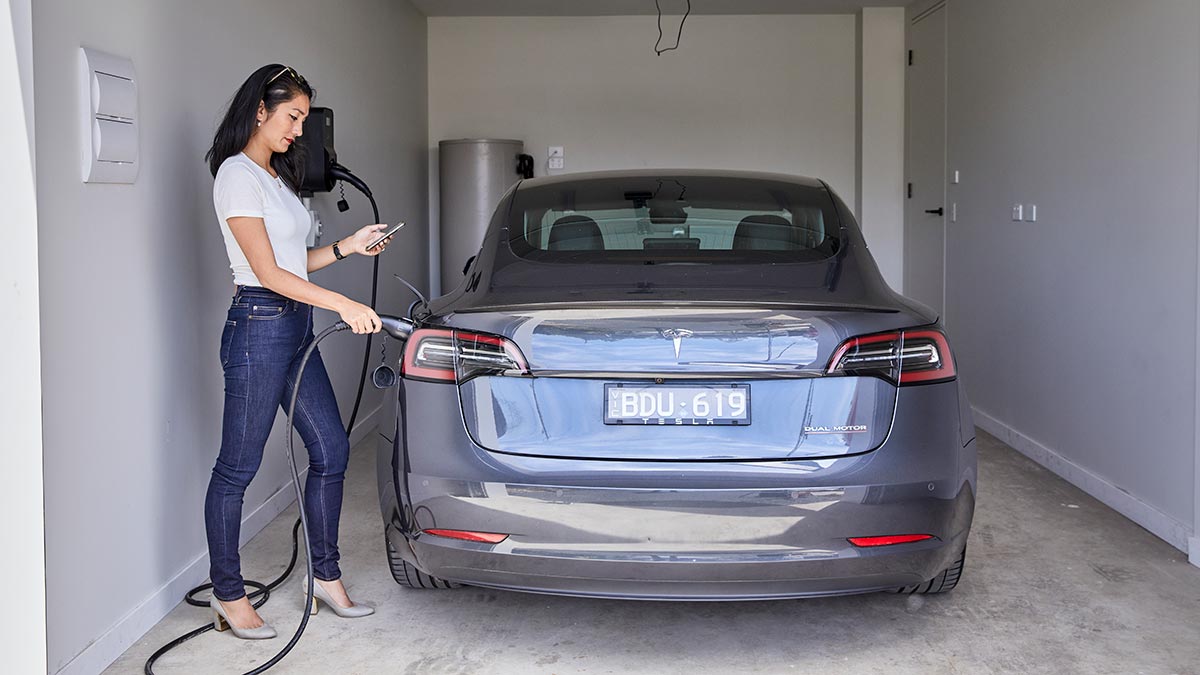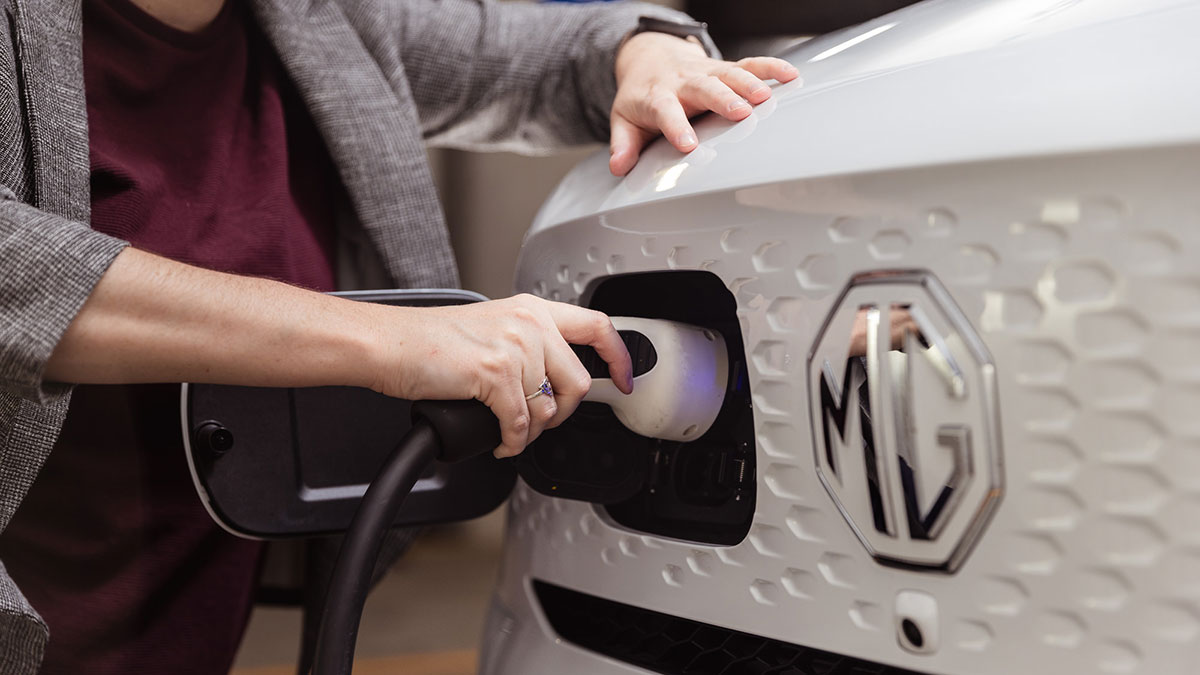You can now buy an EV for $25,000 and there’s a wide range of electric cars and SUVs for less than $45K from BYD, MG, GWM, Chery and other brands. Here are the cheapest EVs to buy in Australia right now.
Where’s the best place to locate an EV home charger?

An EV home charger is perfect for keeping your electric car powered up, but is the garage the best place to put it? Let’s look at the options.
As more Australians switch to electric cars, installing an EV charger at home is becoming an important aspect of the ownership experience. It offers the convenience of charging from your property overnight and, for most electric vehicle owners, will be cheaper compared to public charging over the long run.
But where should you put an EV charger for maximum safety, security and convenience?
This guide takes you through the key factors to consider before installing an EV home charger and the pros and cons of various locations around the home.
RACV electric vehicle guides
- Installing an electric car home charger: what to know
- How to charge an electric car at home and how long it can take
- Guide to electric vehicle charging, plug types and cables
- Australia’s best electric cars and SUVs
- The cheapest electric cars in Australia
- What to know about buying a used electric car
- Electric car rebates, discounts and incentives
In this article

You've bought the EV, but where to put the charger? There are many factors to consider.
Key factors for best EV charger location
The best place to put a home EV charger might seem obvious, based on your property layout, but there are some key factors for all homeowners to consider from the outset. These can help determine the most suitable and cost-effective location and features you’ll need from the charging unit.
- Access to power supply – a dedicated circuit is usually required between your switchboard and the EV charger, so proximity to the power supply becomes relevant to help minimise installation complexity and cost (within 20 metres between charger and switchboard is recommended). A qualified and licensed electrician should be able to advise on this and all other electrical issues.
- Weather exposure – outdoor locations need water-resistant equipment and might require extra protection, such as a unique cover or awning. Carports need careful consideration too. EV chargers installed outdoors should have a suitable water resistance rating (eg. IP65).
- Security – an EV home charger could be a target for vandalism if positioned close to the street. If visible from the street, a lockable charger requiring authentication is recommended. Also consider lighting around the area if the charger is positioned outdoors.
- Ease of use – consider where the car’s charging port is located (front, back left/right, etc) in relation to the EV charger and how you access your parking area (driving in forward or reversing in). This can help determine the ideal location for the charger and the length of cable you need to reach the charging port. If you have multiple EVs, you might need to consider installing multiple chargers.
- Cable issues – EV chargers usually have fixed cable lengths, varying according to the product (5m, 6.5m, 7.3m, etc). Some chargers have cables tethered to the unit, while others are untethered (using a socket). Once you work out how much cable you need, consider how you’ll manage the cable to reduce tripping hazards (eg. with hooks and reels).
- Connectivity – smart EV home chargers such as the Tesla Gen 3 Wall Connector and Myenergi Zappi offered through RACV often have a wireless sensor and remote monitoring capability that needs an internet connection, so consider locating the unit within range of your home Wi-Fi.
- Future needs – these might include adding another electric car to the household or integrating the EV home charger with a rooftop solar system. Location becomes important here, as does choosing an EV charger that will handle higher loads and can integrate with renewable energy and battery storage systems.

A lockable garage offers security and weather protection, but also consider how you’ll manage the cable attached to the EV charger.
Best positions for an EV home charger
Garage
A secure, enclosed garage is often the ideal position for an EV home charger. Most chargers are designed for easy wall mounting, but the load on the wall will vary according to the unit and whether cables are tethered.
Check the manufacturer’s specifications and consult with a qualified tradesperson if there are any doubts over the structural integrity of the wall where the EV charger and cables might be located.
A licensed electrician experienced in EV charger installations should be well placed to advise on electrical issues at your premises, working in accordance with Australian electrical standards that cover enclosed areas housing EV charging equipment.
Pros
- Protected from weather and potential vandalism.
- Easy access to vehicle and charging equipment.
- Typically closer to existing electrical infrastructure.
Cons
- May require extensive electrical work if garage is detached.
- Limited to homes with adequate garage space.
More: How to improve the security of your driveway or carport
Carport
A carport that offers protection from the elements but which is still close to the home is often considered a prime location for an EV charger.
Pros
- Some degree of weather protection, depending on the carport design.
- Usually close to existing power supply and switchboard.
- Various options for EV charger mounting (eg. wall mounting or support post).
Cons
- May be exposed to weather, limiting charger options to those with a higher water resistance rating (eg. IP65 or higher) or requiring additional protective housing.
- Less secure than a fully enclosed garage (charger with security features recommended).

Is the charging port for your EV located at the front or back? This could influence where you locate a home charger.
Driveway
The driveway can be a convenient location for an EV charger on some properties, but does bring a number of drawbacks.
Pros
- Offers flexible positioning of the charger, such as a freestanding post or external wall.
- Convenient if your driveway is the most accessible or only regular parking option.
- Easy to share with other EVs if you are limited by a single car garage or carport.
Cons
- Fully exposed to weather, requiring high water resistance rating, durable cables and possibly a protective housing for the charging unit.
- May need bollards, cable covers, signage etc to protect charger and avoid trip hazards. Overall costs may also increase.
More: How to find and hire a tradie for your job
Shared access spaces
A freestanding charger in a convenient location away from the main building might be the best option for homes that have multiple parking areas, shared access spaces and large open driveways.
Pros
- May be suitable for dual-occupancy dwellings or multi-car households.
- Flexibility in positioning, especially where the charger can be placed between two cars.
- Suitable for homes with limited wall space.
Cons
- Expect higher installation costs (trenching, wiring, mounting, etc).
- May require council approval for boundary installations.
More: Home solar power system guide: from installation to ongoing maintenance
Apartment buildings
EV charging areas at new apartment buildings and multi-unit developments are becoming more common in parallel with the increased uptake of electric cars.
Property owners and tenants can discuss their options with the owners corporation or strata manager, but the ideal location will be one where all residents can access the charger. It could also be set up as a smart charging system that can monitor usage and distribute costs among residents.
Pros
- The charger could be set up as part of a communal charging network.
- May be eligible for government incentives.
- Can add value and future-proof the property.
Cons
- Requires strata/body corporate approval.
- May involve complex metering or billing arrangements.
As you can see, there’s a lot to consider when planning where to locate an EV charger. The charger’s safe positioning and installation is paramount, so it’s worth seeking professional advice from a licensed electrician experienced in this field.


